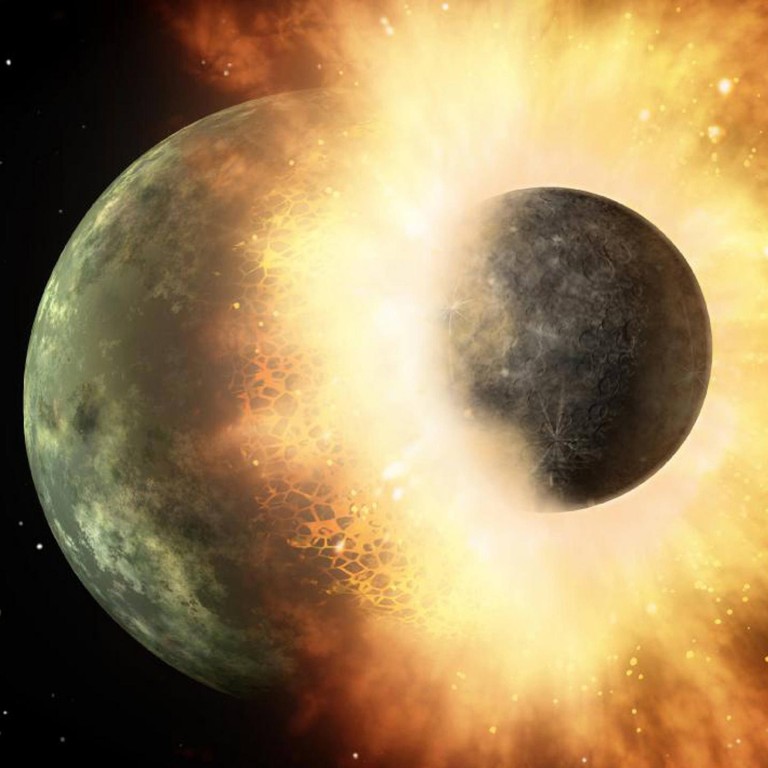
New analysis may explain why the earth and the moon are so chemically similar
It is a lunar mystery that has lingered for decades: If the moon is made of material from another planetary body that crashed into earth, why is its chemical fingerprint so similar to that of our planet?
It is a lunar mystery that has lingered for decades: If the moon is made of material from another planetary body that crashed into earth, why is its chemical fingerprint so similar to that of our planet?
Nobody is 100 per cent sure how the moon was created, but the giant-impact model is the most widely accepted.
It suggests that 4.5 billion years ago a proto-planet about the size of Mars collided with earth during the turbulent formation of our solar system.
This theory explains a lot of the physics of the earth-moon system. But there has been one major stumbling block: the material that makes up our moon is chemically very similar to the material that makes up the earth. Too similar.
Computer models show that in the aftermath of the great smash most of the impactor body, known as Theia, would have accreted onto the earth. However, a fraction of Theia's debris would have been ejected and eventually coagulated to form the moon.
But if the moon is made of smashed-up bits of Theia, why would its chemical composition be so similar to what we find on earth? Presumably, Theia and the earth formed in different parts of the solar system and would therefore be made of different materials.
After all, earth and Mars look very differently chemically. A new study published in may provide the answer to this long-standing conundrum. Researchers from the Israel Institute of Technology in Haifa and the University of Bordeaux in France found that there is a good chance that the material that made up Theia and the earth was nearly identical after all.
To reach this conclusion, the researchers looked at 40 simulations of the growth of the solar system's inner planets, which formed as small particles collided and stuck together to eventually form planetary embryos.
Toward the end of the simulations there were usually three or four big planets surviving.
"For each of these planets we have detailed data of which planetesimals they accreted and when," said Alessandra Mastrobuono-Battisti of the Israel Institute of Technology and the lead author on the paper. "We therefore know the essential composition of the impactors and the planets they impact.
"We now know that the formation of a moon similar to the earth can happen in 20 per cent to 40 per cent of the cases, which is a huge percentage compared to what we thought before," Mastrobuono-Battisti said. "And if we assume that some of the material that formed the moon came from the earth, this percentage rises to 55 per cent."
So, this particular moon mystery may now be solved.
